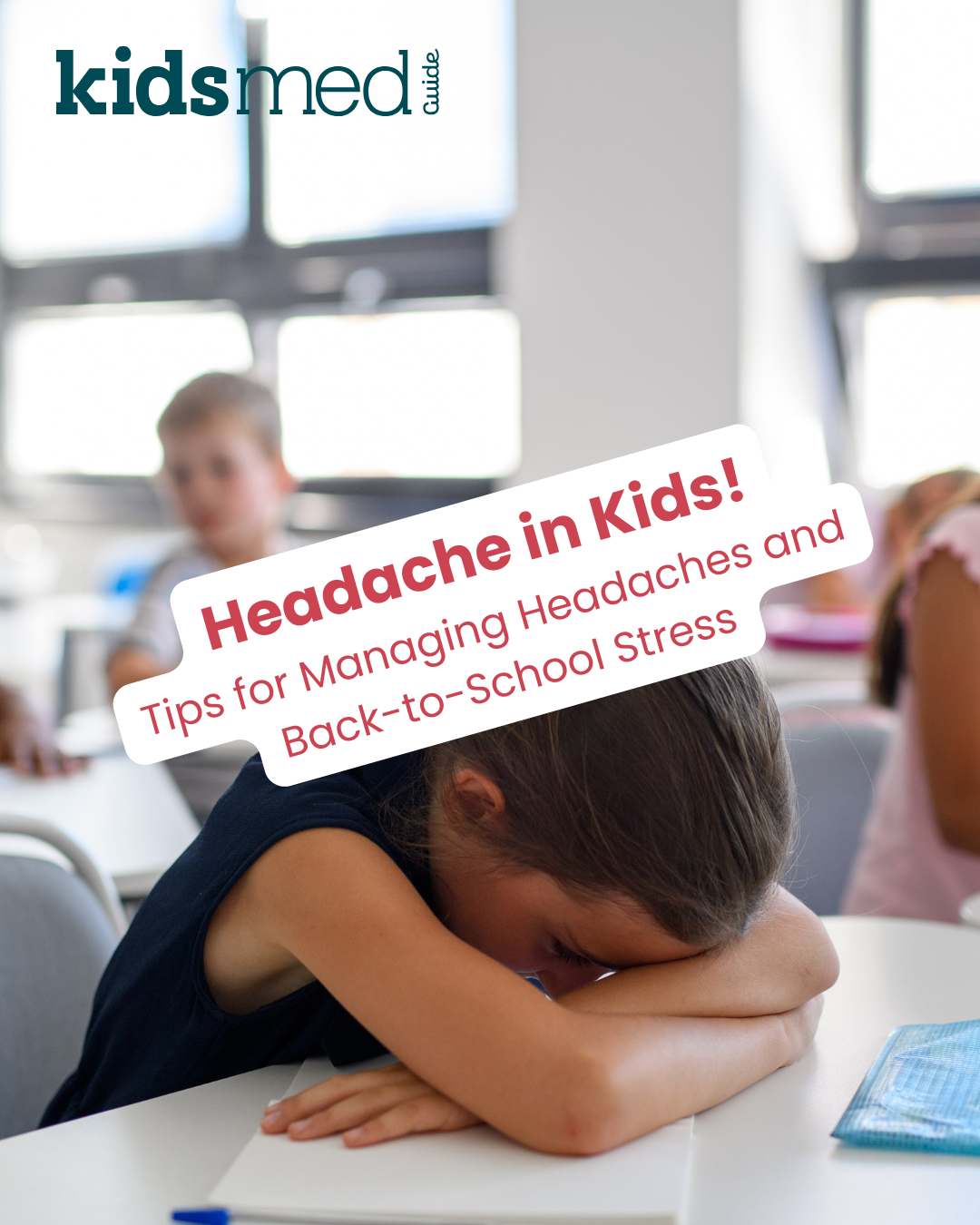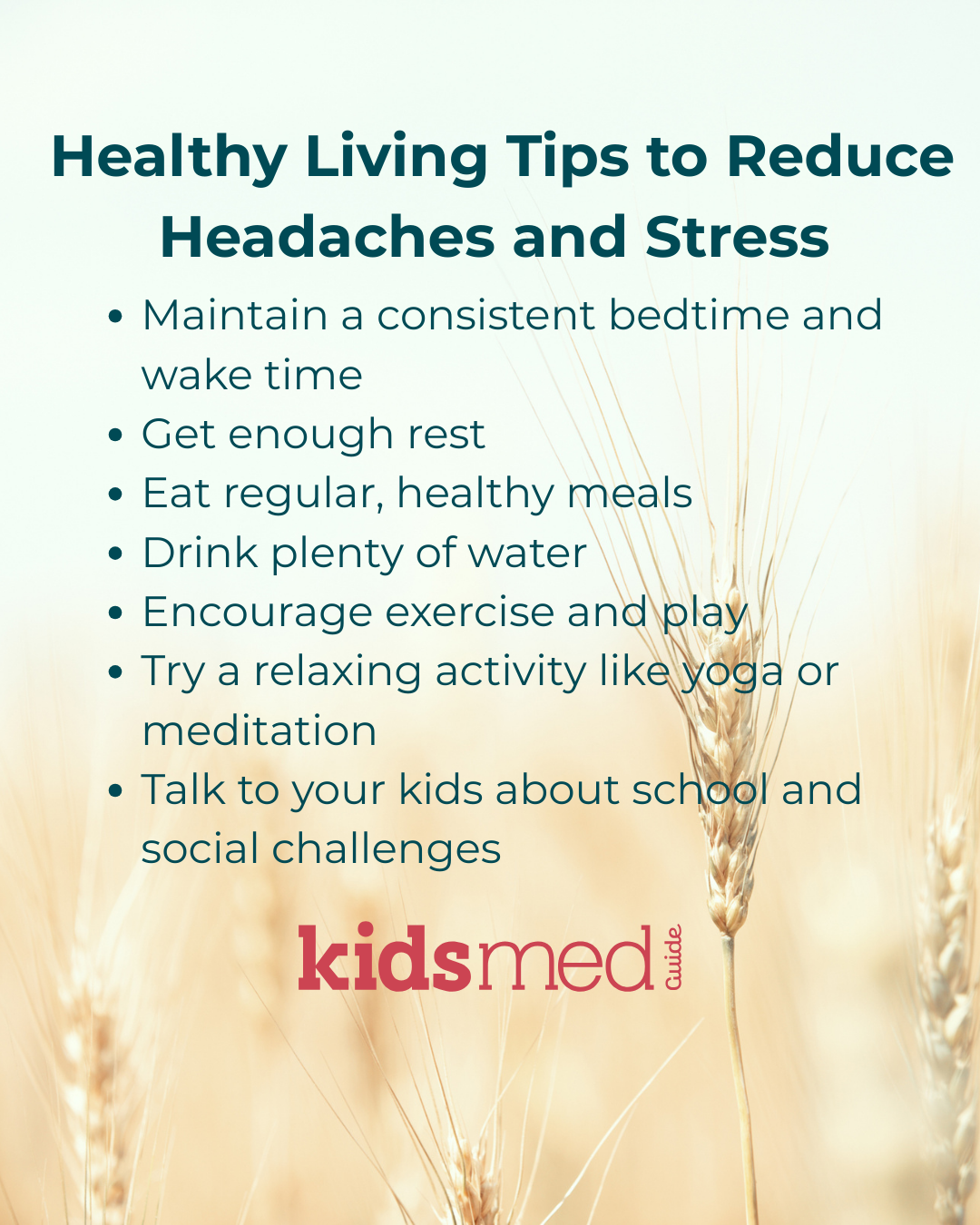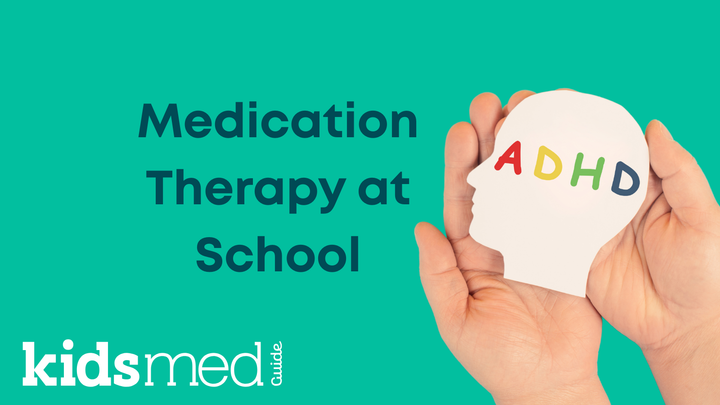Pediatric Headache Management During School Stress

Headaches are among the most common health problems in children, and they tend to become more noticeable during the school year. As an adult, whenever I experience a major change in work, schedule, or family life, I usually get a headache about a week later. Kids are no different!
Busy schedules, school expectations and pressure, and social situations can all contribute. The good news is that with practical steps and professional guidance when needed, it is possible to decrease the frequency and severity of your child's headaches.
Why Pediatric Headache Management Matters
Headaches in children are more than just uncomfortable; they can disrupt learning, sleep, and participation in daily activities. Regardless of how severe the headache is or what causes it, having a headache is a common reason kids miss school.
According to the American Academy of Pediatrics (AAP), headaches are a common reason children visit their pediatrician. Finding the cause or triggers of the headache helps to determine the proper prevention and treatment strategy.
Common Types of Headaches in Children: What Parents Need to Know
- Migraines in children: Severe, throbbing pain that may be accompanied by nausea, vomiting, or sensitivity to light and sound. It can affect one or both sides of the head. Children might see zig-zags or flashing lights in their vision. Migraines can last a few hours and tend to run in families.
- Tension headaches: Usually mild to moderate, described as a tight band around the forehead or head. It can feel like wearing a ball cap that’s too tight. These headaches are often linked to stress, poor posture, or fatigue.
- Stress-related headaches: Directly related to school stress or other pressures. They often overlap with tension headaches.
- Illness-related headaches: Viral illnesses are among the most common causes of headaches in children. Congestion and blocked sinuses can also cause headaches. While not strictly school-related, we know kids in school get sick from time to time!
School Stress and Headaches
Academic pressure
Homework, tests, and high expectations can cause stress headaches in children, affecting their concentration and performance.
Social stress
Bullying, peer pressure, and social anxiety can trigger or worsen existing headache patterns. The pressure to perform well in sports or other activities can also contribute to social stress.
Environmental triggers
Bright classroom lights, loud noise, poor seating, and irregular eating and drinking schedules can all contribute. (Elementary schools can be loud!) Schools can help by offering small adjustments, such as allowing water bottles or quiet breaks.
Managing Headaches in Children
At-home strategies
Not every type of headache can be prevented, but there are some strategies to reduce the risk or intensity.
- Encourage regular, healthy meals and good hydration.
- Set consistent bedtimes and wake times to stay well rested
- Encourage physical activity and exercise – it helps with overall health and the immune system too!
- Teach stress-reducing techniques like deep breathing, meditation, walks, yoga, or journaling (coloring for younger kids).
If headaches happen often, track the symptoms to find triggers and spot patterns. What was your child doing the day they had a headache? Did they eat a specific food? Not drinking enough water? Sleep too little? This helps you and your doctor.

School-based support
If headaches happen at school, talk to your child’s teacher or nurse. It may not be possible for your child to come home for every headache, but it might be possible for them to rest at school before rejoining activities.
Teachers and schools can:
- Provide quiet rest areas, possibly with dim lighting and a desk for resting their head.
- Allow short “brain breaks.”
- Allow children to have a snack or water, especially if there’s a long stretch before lunch or they are heading home.
- Monitor medication use and provide any prescribed medication or OTC options according to the child’s care plan.
- Share observations with parents about headache frequency or triggers.
Medication and professional care
Some children benefit from medication. Not every headache needs to be treated with medicine, but if your child is very uncomfortable, it might help.
Over-the-counter pain relievers like acetaminophen or ibuprofen can be used at age-appropriate doses according to the package instructions for occasional headaches. If your child needs medicine frequently, they should see a pediatrician for evaluation. Using too much acetaminophen or ibuprofen (usually defined as more than three doses in a week) can lead to dependence on the medication and rebound headaches.
Prescription medications can help manage recurring migraines. A pediatrician or neurologist may prescribe medication to prevent or treat them. If needed, parents can coordinate with the school nurse to ensure medication is available during a migraine at school.
When to See a Doctor
Most headaches are not serious, but certain symptoms require medical attention.
Contact a healthcare provider if your child’s headaches:
- Occur more than once a week or regularly interfere with school attendance
- Wake them from sleep or are worse in the morning
- Are accompanied by vomiting, vision changes, weakness, numbness, or balance problems
- Follow a head injury
- Suddenly become much more severe or change in pattern
- Are accompanied by ear, eye, or sinus pain
Pediatricians and pediatric neurologists can help determine if further evaluation, imaging, or referral is needed.
If the headache is sudden and very severe, or if the patient is confused, lethargic, has double vision, or experiences intense vomiting, it is a medical emergency – call 911 or emergency services.
A stiff, painful neck with or without fever could also be a sign of meningitis, and you should seek emergency care.
Preventing School Stress Headaches
- Teach children stress-management tools for life, especially to use before tests, games, performances, or presentations. These tools might include walking, exercise, reading, yoga, guided meditation, journaling, deep breathing, or talking with family and friends. The best stress-management tool varies depending on the family and personal beliefs.
- Try to keep a consistent schedule for meals, homework, and bedtime. This can be tough, especially for older kids, but good sleep and staying well-rested are important!
- Promote open communication about school challenges. Sometimes talking about it can help.
- Help children recognize their own triggers and practice self-care. Have them take part in creating a headache diary. This will give them some autonomy and control.

Conclusion
Effective pediatric headache management involves some detective work. The pressures of school can definitely trigger a headache, but pinpointing any specific triggers or causes will help you and your healthcare provider develop the best treatment.
Occasional headaches can be watched and possibly managed with an OTC medication like acetaminophen or ibuprofen. Frequent or severe headaches require a visit to the doctor’s office.
Frequently Asked Questions
What are common triggers of headaches in children?
Poor sleep, dehydration, skipped meals, stress, and environmental factors like bright lights or noise can contribute to headaches. Viral illnesses can cause headaches in children. Migraines may occur in pediatric patients and can be hereditary.
How can schools help manage headaches in children?
Schools can provide quiet spaces, allow for short breaks, offer access to water and snacks, and support safe medication use with proper documentation.
When should medical care be sought for a child’s headaches?
If headaches are frequent, severe, wake a child from sleep, occur first thing in the morning, or are accompanied by neurological symptoms, seek medical evaluation. Sudden, extremely severe headaches (especially if they occur with vision changes, projectile vomiting, or lethargy) are a sign of a medical emergency.
Can lifestyle changes prevent school stress headaches?
Yes. Just like with adults, consistent sleep, hydration, stress management, and balanced nutrition are effective preventive tools. Keep a headache diary to identify triggers.
Are any school forms needed for headache management?
Most schools require medication administration forms and a current care plan from the child’s healthcare provider before allowing any medication to be given at school.
The following references were used to compile this information:
Headaches: When to Call the Pediatrician. (2019, January 28). HealthyChildren.Org. https://www.healthychildren.org/English/health-issues/conditions/head-neck-nervous-system/Pages/Headaches-When-to-Call-the-Pediatrician.aspx?_gl=1*u7whiz*_ga*MTYxMDY4OTIyMy4xNzU3ODk1NzI3*_ga_FD9D3XZVQQ*czE3NTc5ODc4ODMkbzMkZzEkdDE3NTc5ODc5ODEkajU5JGwwJGgw
Kelly, M., Strelzik, J., Langdon, R., & DiSabella, M. (2018). Pediatric headache: overview. Current opinion in pediatrics, 30(6), 748–754. https://doi.org/10.1097/MOP.0000000000000688



